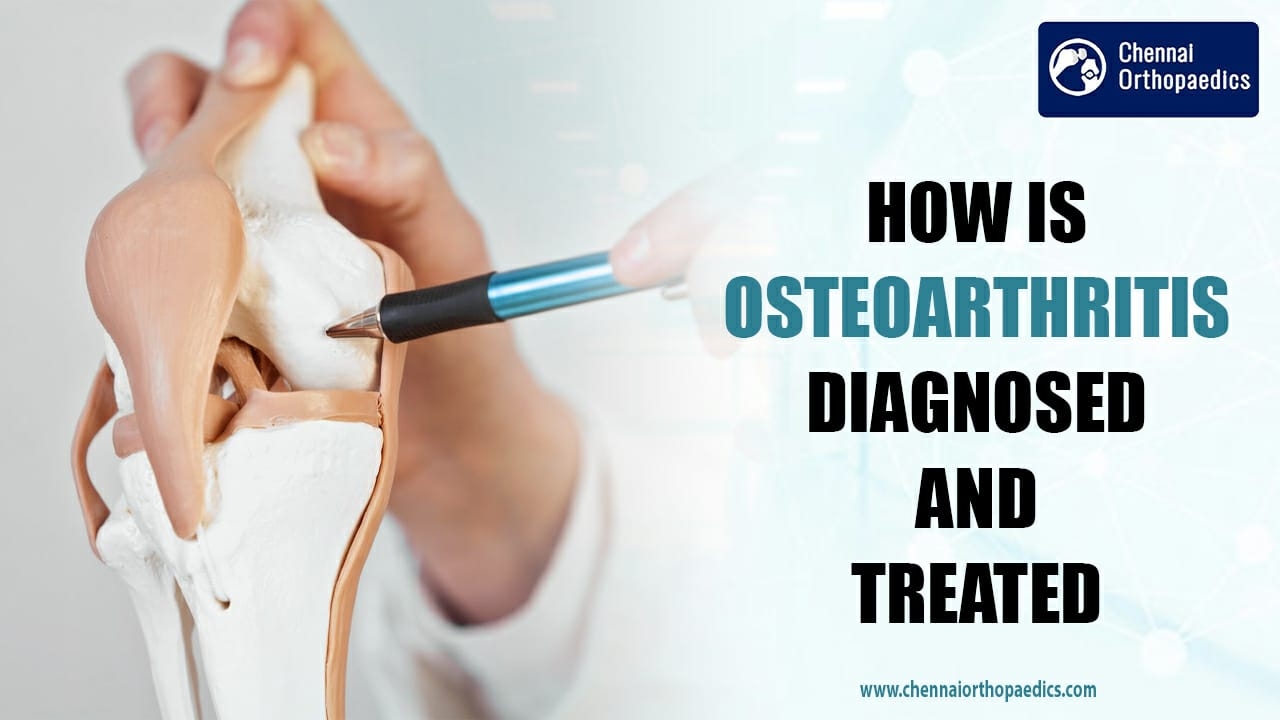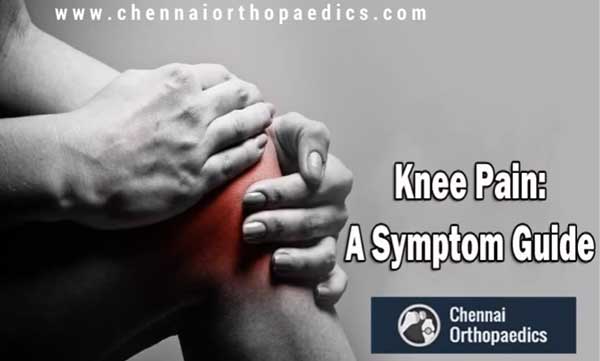Date :27-Feb-2024
How is Osteoarthritis Diagnosed and Treated
Osteoarthritis (OA) is the most prevalent form of arthritis. It occurs when the protective cartilage cushioning the joints wears away, causing bones to rub against each other during movement. This leads to pain, stiffness, and reduced mobility.
In our joints, the ends of bones are covered with a protective layer called cartilage. This cartilage acts like a cushion and lubricant, helping bones move smoothly. However, this cartilage gradually wears away in osteoarthritis, leading to discomfort and stiffness in the affected joints.
Osteoarthritis can affect your
Hands
Knees
Hips
Neck
Lower back

The Causes of Osteoarthritis
It is not quite clear why the condition occurs, but primary osteoarthritis typically develops gradually as you grow older. With age, the natural wearing down of your joints can lead to the breakdown of cartilage.
Osteoarthritis can also arise as a result of:
Car Accidents
Sport injuries
Falls
Symptoms
The symptoms of Osteoarthritis usually build with time. These are:
Joint pain or ache after prolonged activity, or at the end of the day.
Limited motion that might improve with movement.
Clicking or popping sound when a joint bends.
Muscle weakness around the joint.
Stiff joints, especially in the morning or after resting.
Swelling around the joint
Osteoarthritis can impact various body parts differently. Some instances are:
Pain in the groin or buttocks, sometimes inside the knee or thigh.
A scraping or grating sensation when you move your knee.
Bony growths called spurs on joint edges can make fingers swollen, tender, and red, with pain possibly at the base of the thumb.
Pain and tenderness in the big toe, with swelling possibly in the ankles or toes.
The Diagnosis
A thorough physical exam is crucial for diagnosis. Pain and limited motion are typical in all types of osteoarthritis, but each joint has its unique signs during examination.
An orthopaedic doctor would examine your joints and use imaging tests. They would enquire on the first sighting of the symptoms. A healthcare professional would also use X-rays to see your joints and may also order an MRI or CT scan. Blood tests might be necessary to rule out other conditions with similar symptoms.
There isn't a blood test to diagnose osteoarthritis. Blood tests are done to rule out diseases that can cause secondary osteoarthritis and to differentiate from other arthritis conditions that might look like osteoarthritis.
Doctors often do arthrocentesis in their office. They use a sterile needle to take out joint fluid for analysis. This helps rule out conditions like gout or infection. Removing fluid and injecting corticosteroids into the joints during this procedure can ease pain, swelling, and inflammation.
Arthroscopy is a surgery where a doctor puts a small camera into your joint. This helps find and sometimes fix problems with the cartilage and ligaments.
The Treatment
A healthcare professional would aid you in easing your osteoarthritis symptoms. Arthritis is a condition that can't be cured, and the cartilage in your joints won't grow back. But there are ways to manage symptoms when they occur.
Medication
You can use over-the-counter pain relievers to reduce pain and swelling. This might include pills you swallow pain-relieving ointments, or patches that you apply on the skin near your sore joints.
Exercise
Performing exercises reduces stiffness and makes the muscles around them stronger. Activities like swimming, water aerobics, and weight training, which are gentle on the joints, can be beneficial. Your doctor might also advise physical therapy during this time.
Heat and Cold Therapies
Using heat or cold on your sore joints can ease pain and stiffness. Your doctor will advise you on how often and for how long you should use a heating pad, ice packs, or a cold compress.
Surgery
Surgery isn't usually necessary for osteoarthritis. But if your symptoms are severe and other treatments haven't helped, your doctor might suggest surgery. This could involve replacing the joint (arthroplasty). Your doctor or surgeon will explain what to expect.
Osteoarthritis is a complex and multifaceted condition that requires a comprehensive approach to diagnosis and management. With ongoing research and advancements in medical science, the outlook for individuals living with osteoarthritis continues to improve, offering hope for a better quality of life and enhanced mobility.
Authored By Dr Bharani Kumar Dayanandam,MBBS,Orthopedic Surgeon














